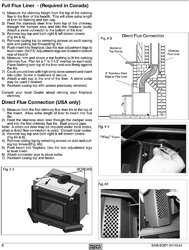Having posted previously, I appreciate all input. About to go ahead and have a Pacific Energy Summit insert installed in fireplace with a direct connect 6" Ultrapro 304 SS insulated liner which will reline an existing 8 1/4" ID round clay flue tile lining a 22' tall chimney. Sweep/installer (35 yrs exp) does not see need for block off plate and is concerned about possible future access to inspect old throat and damper areas being changed.
I think I understand the theory behind a block off plate but see his points as well. Given such a tight fit in existing flue tile, help me understand reasons pro and con not to move forward with his plan and omit block off plate as well as stove choice I have made. PS- this site is great!
I think I understand the theory behind a block off plate but see his points as well. Given such a tight fit in existing flue tile, help me understand reasons pro and con not to move forward with his plan and omit block off plate as well as stove choice I have made. PS- this site is great!



